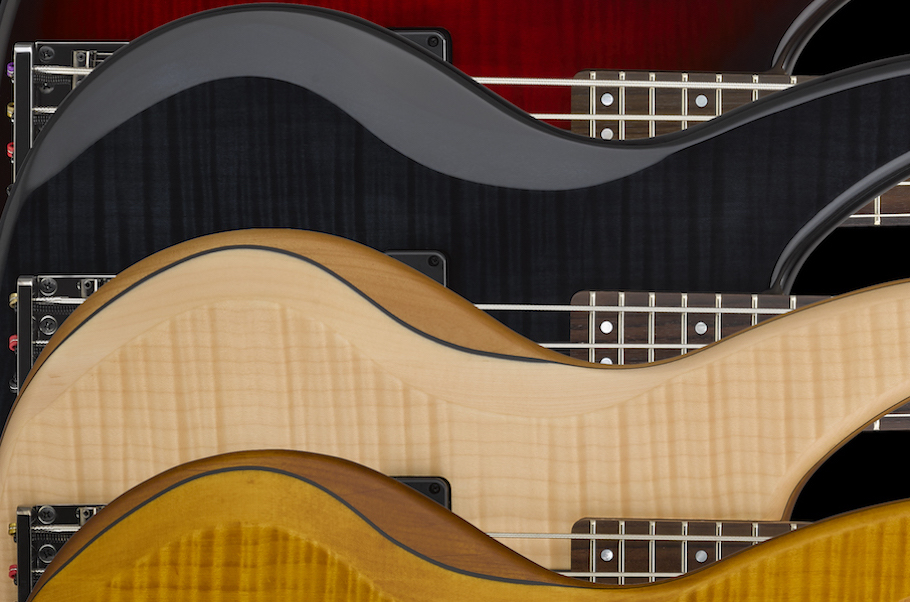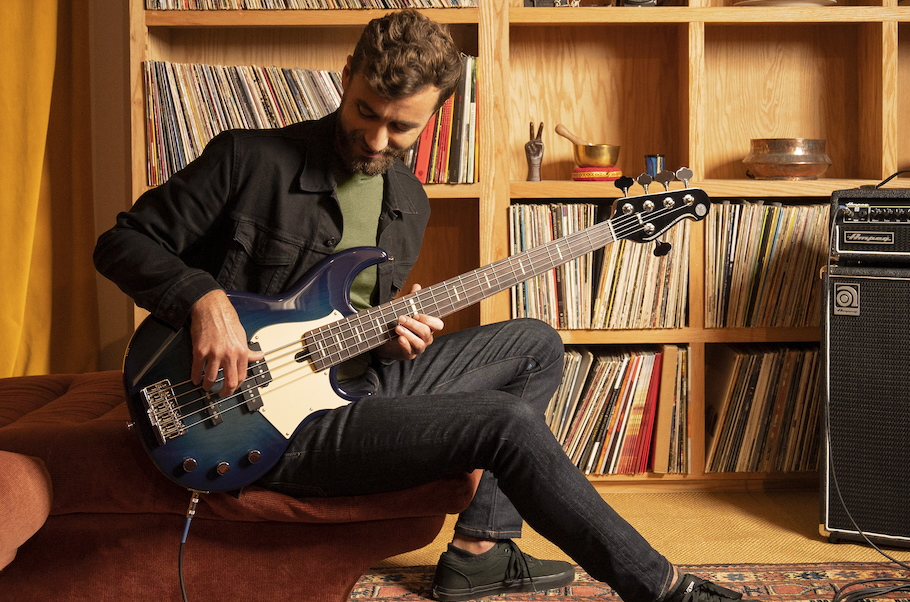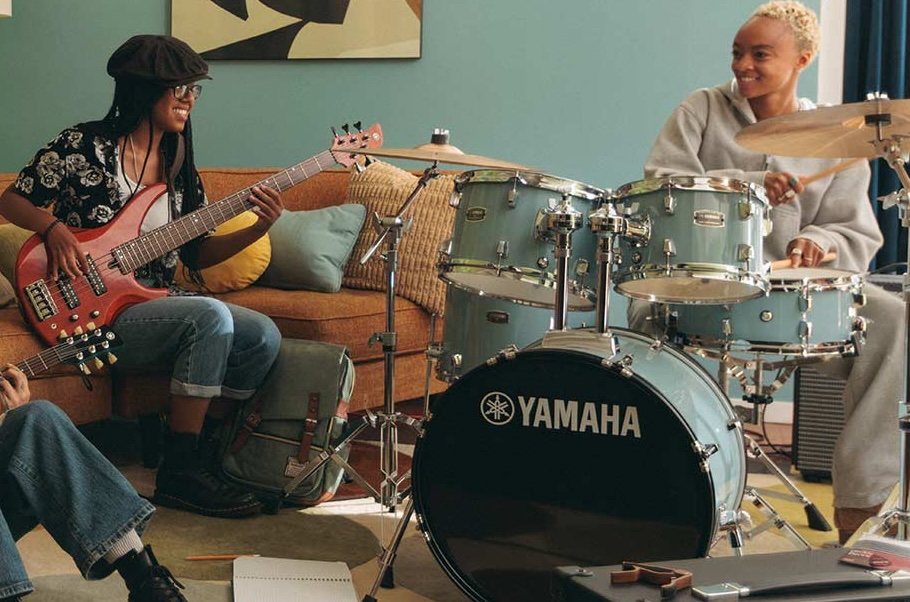A Guide to Bass Bridges
The importance of the humble bridge.
Every component on or in your bass is there for a reason, but some have bigger and more important jobs to do than others. There are those parts with an obvious purpose, and others that are more mysterious. Tuners, nuts, pickups, pots, knobs, switches and straphangers all have clear functions to perform … though they also may be imbued with style points as a side benefit. But when you get down to it, whether you’re talking function or form, there’s no part of your bass with a more important role to play than the bridge.
More Than Meets the Eye
Don’t be deceived by its dense but shiny good looks: The bridge is deceptively complicated.
This was something I didn’t know when I first started playing bass. (That’s because, as every parent has discovered, teenagers know everything.) My attitude when it came to learning anything about my instrument was, just stop talking and hand me the screwdriver. So, armed with youthful ignorance and ham-handed luthery, I attacked my first bass’ bridge and turned what was an already finicky instrument into an unplayable, jangling nightmare.
These days I know that the bridge should not be disrespected, because it is actually the fulcrum for everything your bass does. For starters, it’s the platform that enables the strings to pass over the pickup(s), and it also serves as the high-mass contact point for strings to connect with the bass’ body. In large part, that’s where vibrations — and therefore, the sound of the instrument pre-amplification — live and die. And yet we’re still only scratching the surface of what the bridge does and how it works.
Back in the Saddle
The bridge, which is sometimes referred to as a tailpiece, doesn’t just attach the strings to the body. Each string passes over an individually adjustable saddle designed to be moved slightly forward and backward (affecting intonation), as well as up or down (affecting the all-important playability factor of string height, or “action”). These small tweaks enable the proper set-up for your bass. Without that ability … well, think about having a car where you never rotated the tires, and where the chassis sat on a suspension made from mattress springs and barbed wire. You can drive it, but is it comfortable and efficient? How does it feel when cornering at high speed?

A correctly intonated bass responds with perfect pitch whether you’re playing an open string or anywhere up and down the neck. String height — the desired amount of space between the bottom of the strings and the crown of the frets — is a subjective preference. The two things are co-dependent in that every slight adjustment made to a saddle’s height will affect the intonation for that string, and every millimeter adjustment of the saddle forward or backward to intonate the bass will impact the action. (There are other factors that come into play here — particularly the tension of the truss rod underneath the fretboard — but that’s a story for another day.)
Top-Loading vs. String-Through-Body
Top-loading bridges have a slot (or a drilled hole) through which each string must be threaded, gripping the ball-end of the string so that the adjustable tuner at the top of the neck can be used to create the appropriate tension required for the string to vibrate. The pickup then captures those vibrations and converts them into a signal that can be amplified. You’ll find top-loading bridges in Yamaha TRBX basses.

String-through-body bridges are slightly different in that the string runs into holes located on the underside or bottom of the bass before it passes through the body and over the saddles. The “break angle” at which the strings pass over the saddle (which creates the right amount of downward pressure to maximize string performance) is steeper than it is with a top-loading bridge, and although it’s a nuanced thing, some players say that string-through-body bridges deliver more resonance and sustain. Yamaha BB Series basses incorporate diagonal body-through stringing, whereby the strings are angled at the saddle and pass through the instrument to the bridge at a 45º angle, as opposed to the traditional vertical stringing method, which places more stress on the strings.
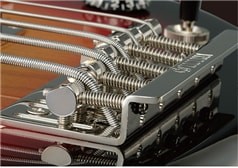
A great way to find out which type is better for you is to get your hands on a Yamaha bass (such as a BB Pro Series, BB 700 Series, BB 400 Series or BBPH Peter Hook Signature BB bass) that comes equipped with a Vintage Plus or Vintage Plus Light bridge. These “convertible” bridges offer both top-loading and diagonal body-through stringing (which can be set to either of two different angles for extra tonal shaping ability — the rounder side of the saddle giving a slightly duller sound, and the more angled area of the saddle producing a slightly tighter one), which gives you the flexibility to choose the approach you prefer.
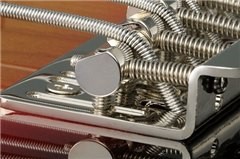
And then there’s the unique bridge design of the Yamaha BBNE2 Nathan East Signature Bass. It features individual saddles attached to the body of the bass for each string. This serves to reduce interference from other string vibrations for minimal cross-talk between the strings, thus prolonging sustain while adding extra punch and note definition. The end result is a strong low end with excellent note separation and clarity.
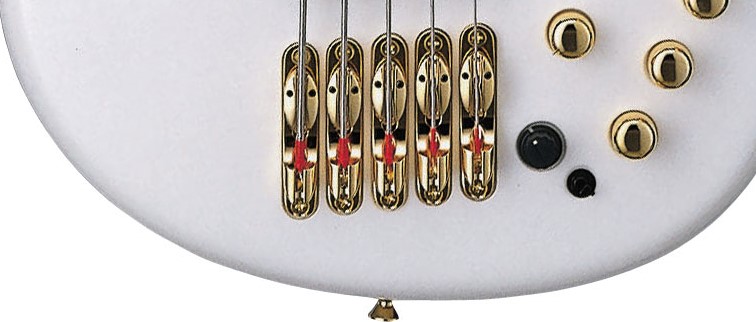
Mass Appeal
Two more things to consider when it comes to bass bridges are mass and material. It’s logical to think that the heftier the bridge, is the more likely it is to improve tone and enhance sustain, though in my experience, I find this to be quite nuanced. I have some basses fitted with high-mass bridges, and other ones with rickety bridges that look like they were fabricated in a hardware store basement, yet in a blind listening test most people probably wouldn’t hear much of a difference between them.
I do think, however, that the bridge material matters. The sonic characteristics and advantages of steel, zinc, brass and other metals can be argued by metallurgists (which I am definitely not), but in general, more expensive basses tend to come with heavier bridges made of more expensive metals. For example, entry-level Yamaha RBX and TRBX basses have bridges made of zinc or steel, while higher-end BB Series instruments (including the aforementioned BBNE2) have brass saddles for a slightly deeper low end, paired with steel bridge plates that deliver a brighter tone, making for more of a “hi-fi” sound. Most Yamaha signature basses (including the Billy Sheehan Attitude 30th Anniversary, Billy Sheehan Attitude Limited 3 and John Patitucci TRBJP2 models) have solid brass bridges.
Personally, I’m comfortable with function over form any day of the week. And here’s what I do know: Well-made basses typically come with well-made bridges. As long as what you’ve got in your hands (or what you’re shopping for) is a bass that boasts a bridge that is stable, doesn’t have sharp edges, and most importantly, allows for precise adjustments, it’ll probably do the job just fine.
Check out Michael’s other blog posts.
Click here for more information about Yamaha basses.










